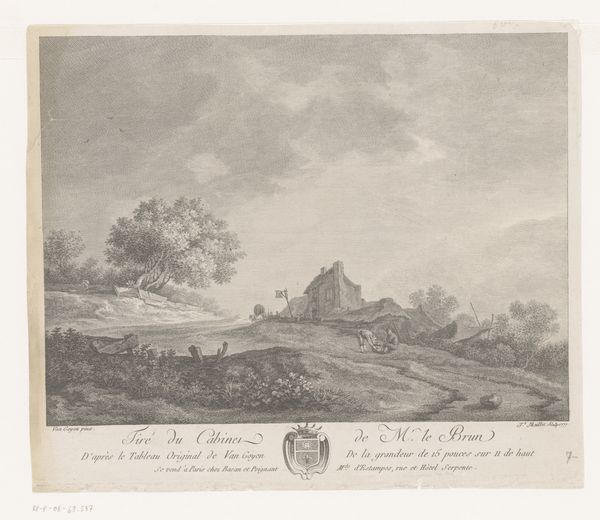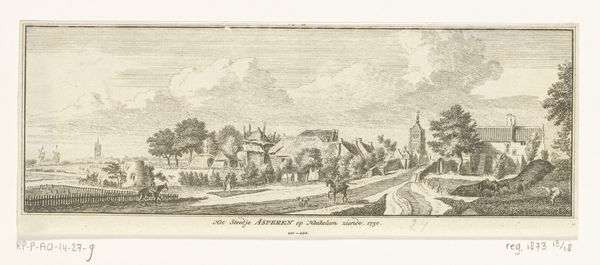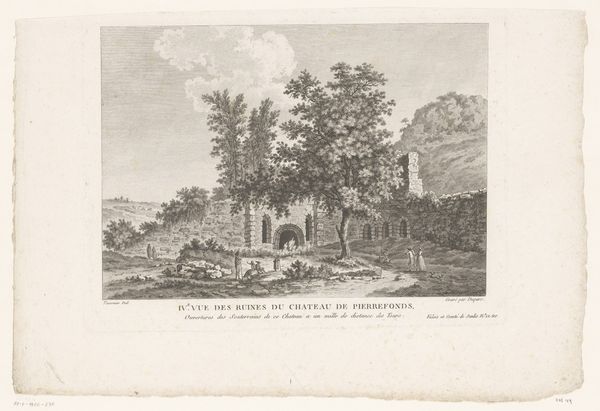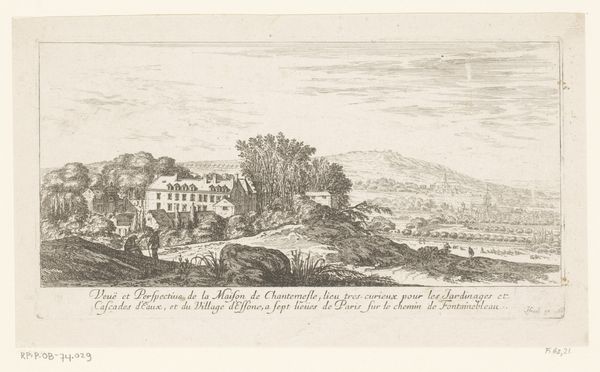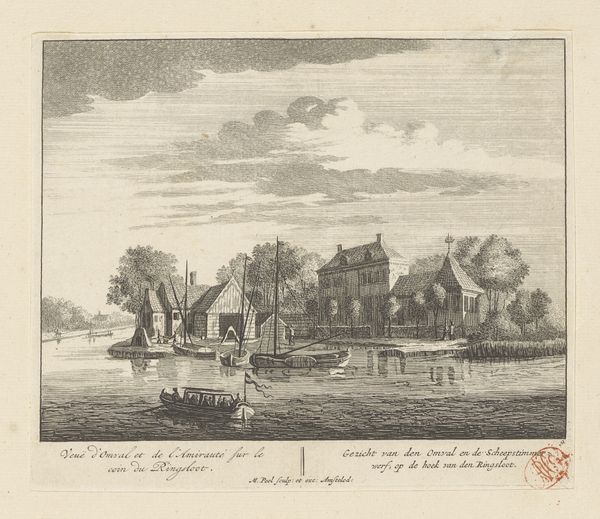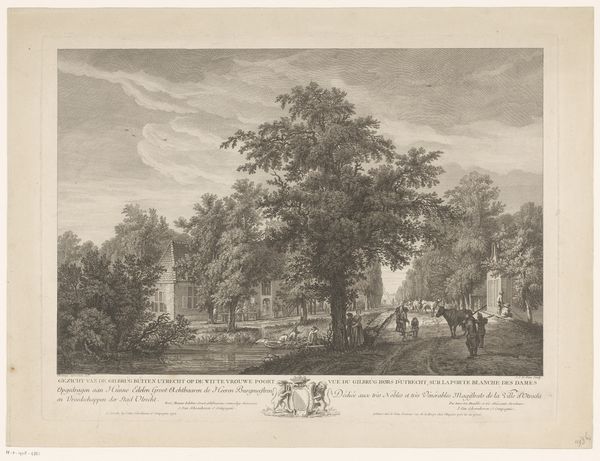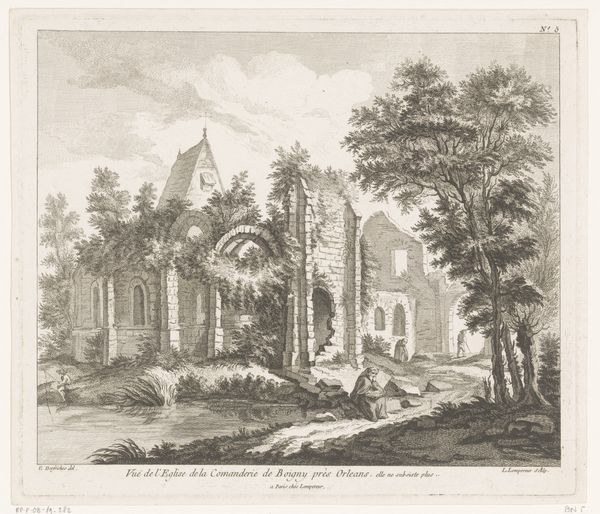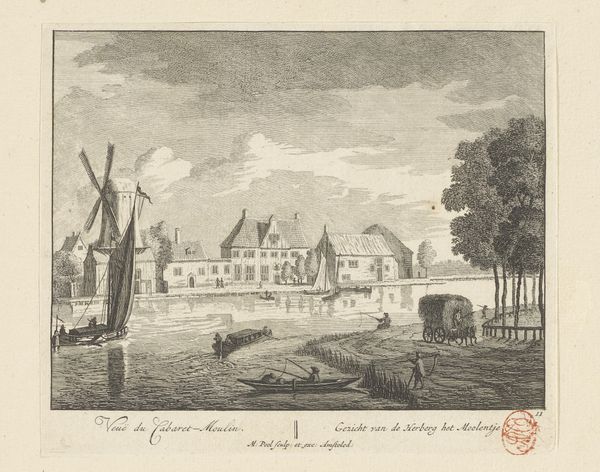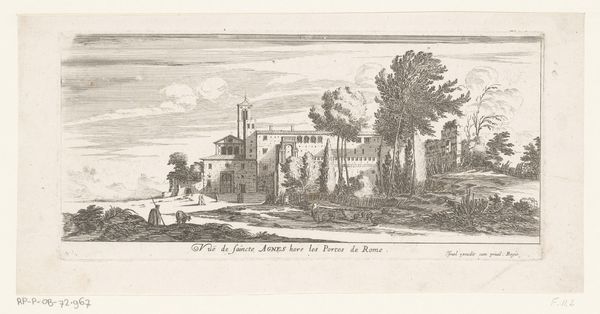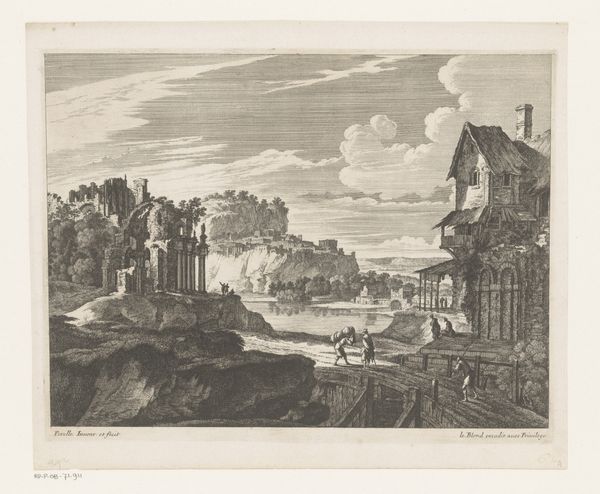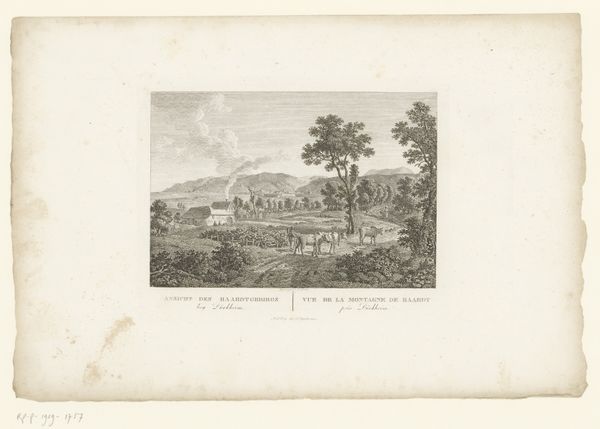
Landschap aan de rand van een dorp, op de voorgrond twee koeien 1715 - 1763
0:00
0:00
print, engraving
#
pen drawing
# print
#
landscape
#
genre-painting
#
engraving
Dimensions: height 264 mm, width 358 mm
Copyright: Rijks Museum: Open Domain
Editor: This is "Landschap aan de rand van een dorp, op de voorgrond twee koeien," a landscape print by Quentin Pierre Chedel, made sometime between 1715 and 1763. It's a peaceful scene, very idyllic. I’m struck by how the artist used line and shadow to create depth. What do you see in this piece? Curator: Immediately, I’m drawn to the layering of imagery. Beyond the cows, figures, and architecture, what deeper story is Chedel trying to evoke with such familiar subjects? Think of the cow as a near-constant symbol through time--nourishment, certainly, but also a quiet presence connected to cycles of nature. What do you suppose that presence evokes here, set against the backdrop of a fortified, almost castle-like structure? Is it about grounding the viewer? Offering a kind of timeless stability? Editor: I suppose the cows and the ordinary shepherd draw the grandeur of the building down to earth, making it less imposing and more integrated into the everyday world. The human connection and animals provide a relatable foreground to contrast with what might otherwise be a symbol of power or authority. Curator: Exactly. Consider the way landscape painting was evolving during Chedel’s time. There was this growing interest in the picturesque – an appreciation for nature, not in its raw, untamed state, but shaped, composed. How does Chedel manage to subtly layer a commentary on rural life and social structure using established symbolic language? Does he perhaps hint at deeper emotional complexities of that time? Editor: That’s a fascinating idea. So it’s not just a pretty picture, but also a comment on society’s values and perspectives. Curator: Precisely. And each element--the animals, figures, even the style--build a framework onto which we project our contemporary values and anxieties. Perhaps what this print reflects is humanity’s enduring need to locate itself harmoniously within our environment. Editor: It is thought-provoking how much depth these symbols carry. I’ll never look at cows the same way again! Curator: Symbols gain and shift meaning with time; they serve as cultural echo chambers. It is thrilling to investigate how visual culture reveals us to ourselves.
Comments
No comments
Be the first to comment and join the conversation on the ultimate creative platform.
